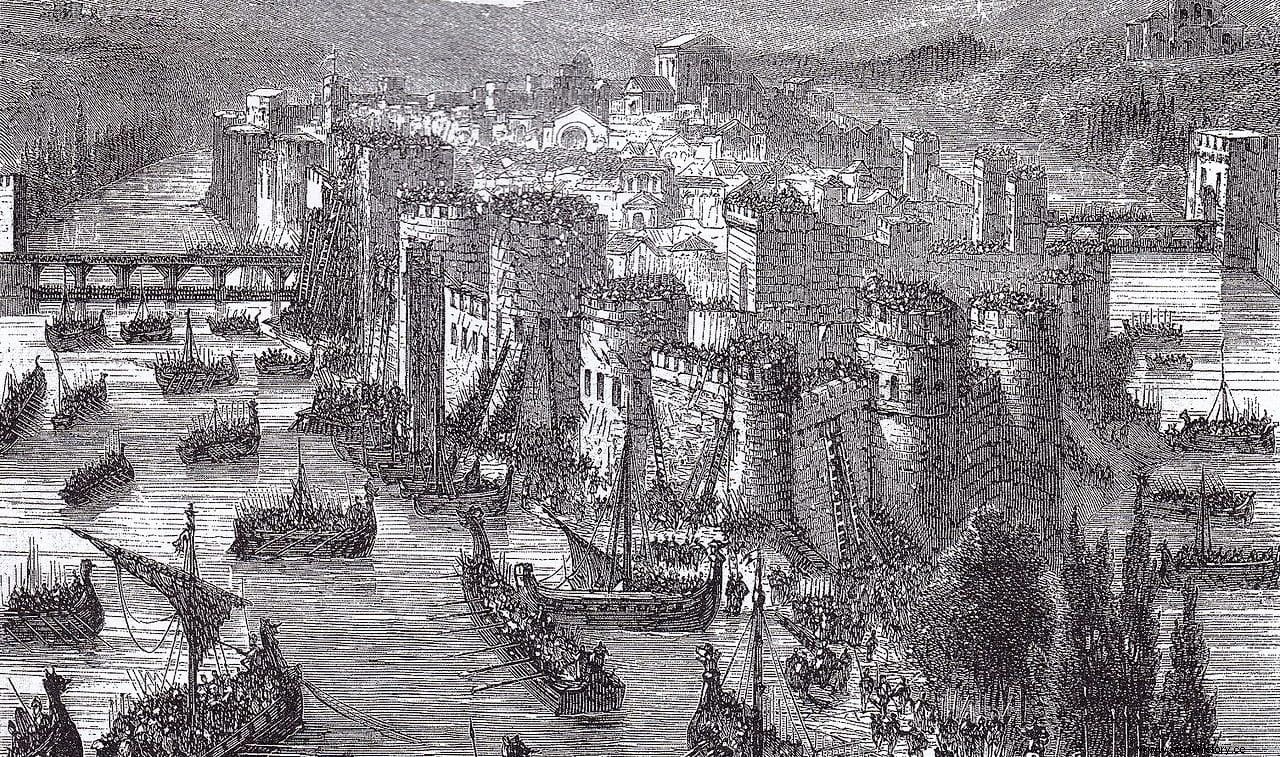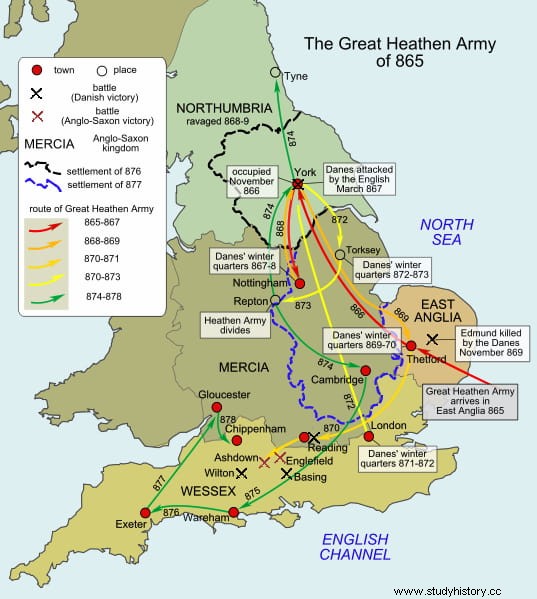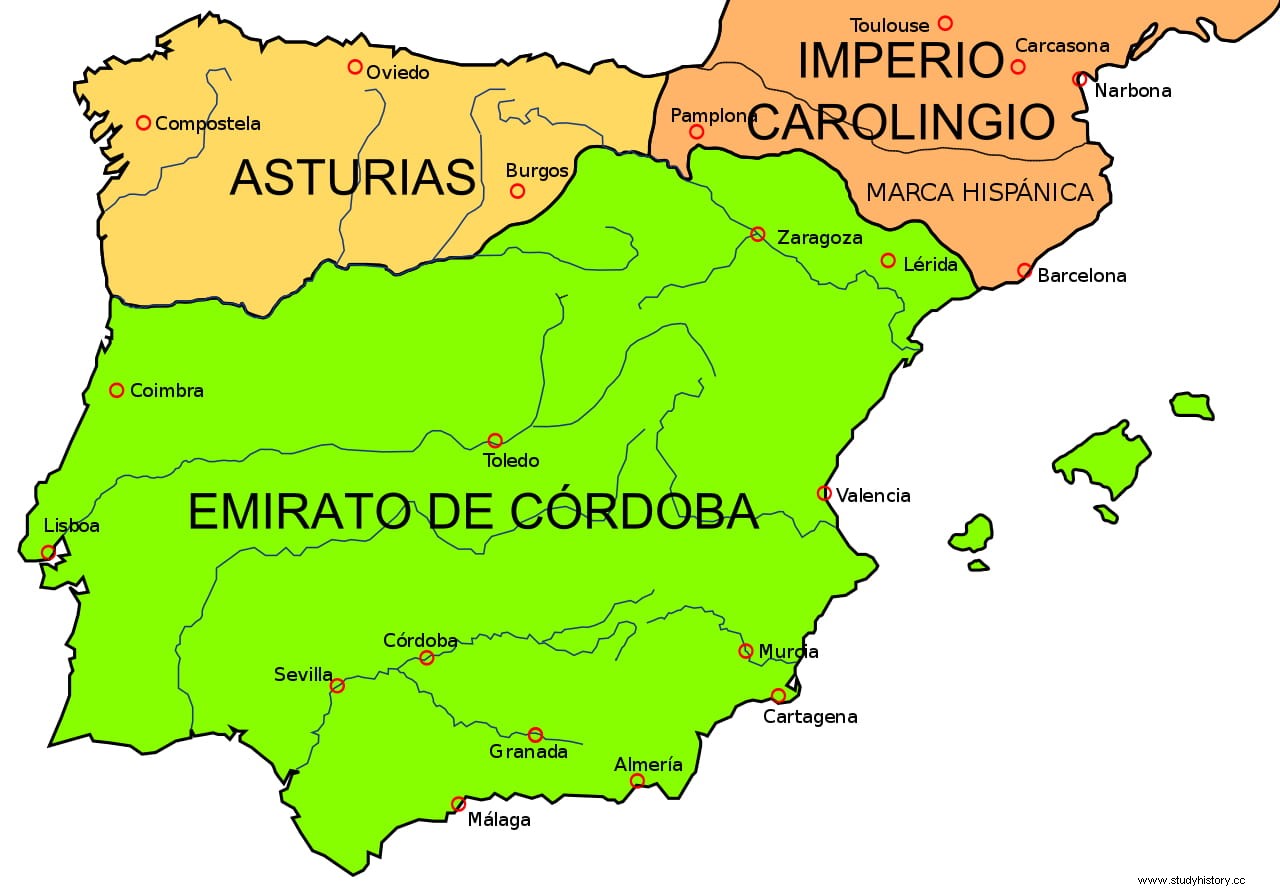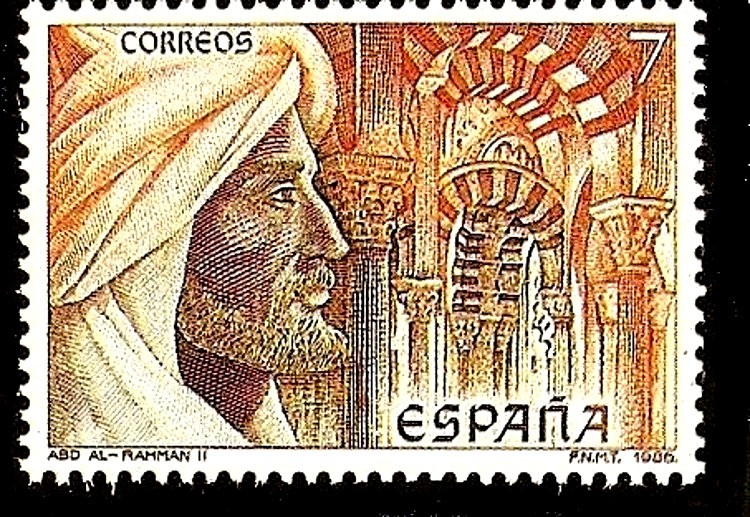Let's go back to the popular TV series Vikings in which, once his protagonist, Ragnar Lodbrok, died, the last seasons focus on the life of his children. Ivar the Boneless he is perhaps the one who captures the attention due to his peculiar personality, which reminds a bit of the classic -and topical- image of Caligula or Nero. But they also have their Ubbe, Hvitsärk and Björn moments. As we have already dedicated articles to all of them except the last one, we are going to do it today focusing, above all, on the expedition that he led to the Mediterranean and that involved the attack on various points of the Iberian Peninsula, including Asturias, Galicia, Algeciras and Seville. .
Before starting, it is worth noting that, for dramatic reasons, the series changes some family relationships. The most important, for what concerns us here, is that Björn not only did not have the birthright - the honor belonged to Ivar - but he was not even the son of Lagertha, who is supposed to have given Ragnar no offspring (or, in in any case, a son named Fridleif and two daughters of unknown names). His mother was Aslaug, Ragnar's second wife. Therefore, Björn was the direct brother of those named above (except for Ubbe, whose affiliation is uncertain) plus Sigurd and Guthrod. He would also be the stepbrother of the offspring that his father had with a third woman, Thora Borgarhjört, made up of Eric, Agnar and Olof.
Although there are those who advance it two decades, Björn must have been born around the year 800 AD. In reality, it is not even certain that he was the son of Ragnar, but that is how it has passed to posterity and the chronicles of the time, in the case of the Gesta Normannorum Ducum (written by the Anglo-Norman monk William of Jumièges in 1060), the Annales Bertiniani (contemporary Carolingian annals of the Viking) or the Annals of Fontenelle (also known as Fontanellense Chronicon , from the second half of the 9th century), they say that he was expelled from the kingdom by his progenitor, following an ancient custom that forced him to do it with the younger children so that they would not stand in the succession to the throne of the eldest. 
This is how he embarked on his first great expedition through the western part of France, even going up the Seine to attack the interior thanks to the shallow draft of the drakkars , to lay siege to Paris itself. He finally reached an agreement with King Charles the Bald which was quite precarious, so there were still more clashes whose resolution we do not know because the sources do not reflect it. We do know that there was a second Parisian looting and that the Gallic monarch ended up hiring some Vikings established in the Somme region to ward off the danger, something that failed because both joined together and only the conversion to Christianity of the latter broke the improvised alliance.
The works cited above are not the only ones that provide data on Björn, who was nicknamed Járnsíða , usually translated as Iron Arm but more accurately Iron Side. We have, first of all, the famous Gesta Danoru m that the historian and theologian Saxo Grammaticus composed around the year 1200, although he does not speak of the character's entire life but from when he was already king of Sweden. He also mentions that he joined the Great Heathen Army's campaign against the Anglo-Saxon heptarchy (Anglia, Essex, Kent, Mercia, Northumbria, Sussex and Wessex), allegedly under the leadership of Ivar the Boneless and his brothers between the years 865 and 878, to avenge the death of his father at the hands of Ælla, monarch of Northumbria; however, Björn's involvement is not listed in most other sources.

Also the Hervarar Saga , from the 13th century, tells how Björn inherited the Swedish throne on the death of Ragnar Lodbrok and then passed the baton to his scion, Erik Björnsson, starting a new and prosperous dynasty known as the House of Munsö. And don't forget the Ragnarssona þáttr or Tale of Ragnar's sons , an Icelandic saga from the 14th century that mixes history and legend, in which it is stated that Björn was part of that fraternal expedition against the English, although he would have been defeated and only the cunning of Ivar, when agreeing with the enemy a settlement that would cover the extension of an ox skin (as in the mythological foundation of Carthage at the hands of the Phoenician Dido), allowed the Vikings to stay in the city of Jorvik (York), which they used as a base to continue the war. The Tale of Ragnar's Sons continues narrating the following expedition, which they carried out through Normandy, France and Lombardy.
Here comes the time to stop and look back at Björn's aforementioned trip to the Mediterranean, shown in the penultimate season of the series despite the fact that it is not clear what role he played in it. The historicity of a first and earlier Viking incursion into Al-Andalus is proven because it is also mentioned by Muslim historians such as Ibn al-Qūṭiyya (also called Abu Bakr or al-Qurtubi) in his History of the conquest of al-Andalus (10th century), Ibn Idhari in his Al-Bayan al-Mughrib (translatable as Book of the amazing history of the kings of al-Andalus and Maghreb , from the 14th century but using 10th century sources) and Al-Nuwayri in his Nihāyat al-arab fī funūn al-adab (in Spanish, La maximum ambition in the arts of scholarship , also from the 14th century). They date the event to the year 230 of the Hegira and do not identify the Vikings by that name but by that of al-majus , meaning worshipers of fire (alluding to Zoroastrian followers of another age); that is, pagans.
The Christian Rotense Chronicle , composed in the 10th century, also endorses the arrival of what he designated as «Normans, hitherto unknown people, pagan and very cruel» , since before reaching the southern part of the peninsula they camped in the Bay of Biscay in the year 844. It is assumed that they landed in Gijón, but for a short time because it was then very small and poor, to continue and fall on La Coruña. Galicia was part of the Kingdom of Asturias, so King Ramiro I sent troops to repel them. With success, although without being able to avoid a psychological imprint strong enough to fortify the coast and guarantee the safety of Oviedo, the capital.

A few weeks later the Vikings tried to attack Usbuna (Lisbon), which was a rich Muslim city in the splendid Emirate of Córdoba but which also managed to resist. The fleet of the majus , which exceeded a hundred ships and four thousand men, headed south while the Lisbon governor sent a mail to Abederramán II warning him of the danger. Before he arrived, the cities of Sidonia, Cádiz and Sanlúcar suffered attacks. The Nordics followed the custom of going up the river courses and went up the Guadalquivir to Coria del Río, exterminating its entire population to prevent anyone from noticing their true objective, Seville. This was easily conquered -except for the citadel- at the beginning of October and brutally looted, obtaining the Vikings a splendid booty and thousands of slaves.
They then continued raiding towns until Abderramán was able to organize his own to confront them. The superiority of their cavalry and the collaboration of Musa ibn Musa, governor of aṯ-Ṯaḡr al-Aʿlà (Marca Superior, approximately what was the former province of Tarraconense), allowed the Andalusians to impose themselves in Talyata (Italica), causing significant losses to their adversaries. While hundreds of their fellow prisoners were executed (they were buried leaving their heads out, then crushed by galloping horses), the rest of the Vikings embarked hastily, not without losing some thirty ships. They were able to negotiate going out to the mouth of the river in exchange for returning part of the loot and then headed home, although they still looted Niebla (Huelva).
An unlikely legend says that a group of majus he remained isolated between Carmona and Morón, converting to Islam and dedicating himself to making cheese, but in general those incursions became an episode of black memory in the history of Al Ándalus, as had happened in the Bay of Biscay. Seville, which was reduced to ruins, was rebuilt with strong fortifications and defensive systems that included what would later become the Reales Alcázares, the shipyards and a messenger alert service. Those prudent measures proved useful when there were new - and frustrated - raids by the Norsemen. The first, according to the Albeldense Chronicle , was in the year 858, Ordoño I reigning in Asturias, and it was starred by Björn together with Hastein, his presumed adoptive father or, more likely, guardian appointed by Ragnar.

Following a course similar to the previous one and with a somewhat larger fleet, they went up the Arosa estuary with the aim of taking Santiago de Compostela, which they besieged. The arrival of an army under the command of Count Pedro Theon saved the situation, causing them to lose a third of their ships. The heathens re-embarked and headed south. Along the way, according to Ib Adhari, they clashed with Andalusian surveillance boats, so when they reached the Guadalquivir, their presence was already known. The strong device deployed to block their passage prevented them from disembarking and they had to limit themselves to ravage the coastal towns, from Algeciras to Orihuela.
In reality, their performance was not limited to Spanish soil, since they also suffered their attacks in Morocco (Arcila, Nador...), where they arrived pushed by a storm, as well as in the Balearic Islands and the southern coast of France. In this way they arrived in Italy, in Luni (Liguria), which they mistook for Rome. There, the famous ruse devised by Björn took place -probably a legend- to cross its well-defended walls:feigning his death and his previous conversion to Christianity so that the burial of his body in sacred would be authorized, which allowed him to enter inside a coffin carried on the shoulders of his own… from which he rose as soon as he was inside, opening the doors to others. In the series, this trick is performed by Ragnar during the assault on Paris.
Whether that anecdote is true or not, the Vikings sacked all of Tuscany, continuing through Sicily and, again, North Africa. Again the legendary stories speak of a battle against the Byzantine fleet, which would have destroyed them thanks to Greek fire and thus persuaded them to return home, although other sources attribute the action -and the use of the destroyer weapon- to the Andalusians. It was probably all just a bad storm, but the thing is, they lost so many ships that they only had about twenty left, so they did have to turn back. During the journey, they took the opportunity to conquer Pamplona; according to some authors going up the Ebro, according to others from the Bay of Biscay.
As we said before, around the year 966 there was a third great Mediterranean expedition, not counting minor incursions (which are reflected in the reviews of the Crónica Silense , about the coastal bastions ordered to be erected by the Asturian king Alfonso III). The new campaign, carried out by Danes under the command of Gudrød Grafeldr with even more troops (about eight thousand men), followed the same itinerary:from Jakobsland (Tierra de Santiago, Galicia) and Portugal, both devastated on this occasion. But the lack of subsequent news seems to indicate that they crashed into the Muslim fleet of the Caliphate of Córdoba and could not continue. The Galician coast, yes, would be periodically visited by men from the north:in 1014 by Olaf Haraldsson; in 1028 by a certain Ulf el Gallego …
As for the protagonists of that adventure, Hastein continued his warrior life while Björn, enriched thanks to the loot they harvested, wanted to retire to reign in Sweden. Ragnar, jealous of the success of his offspring, embarked on the expedition to Northumbria in which he would lose his life and his son joined the Great Heathen Army, as we saw, to avenge him. Possessions were then divided up and Björn's Swedish kingdom was confirmed to him. As always, with differences depending on who tells it; there are few certainties with the Vikings.
